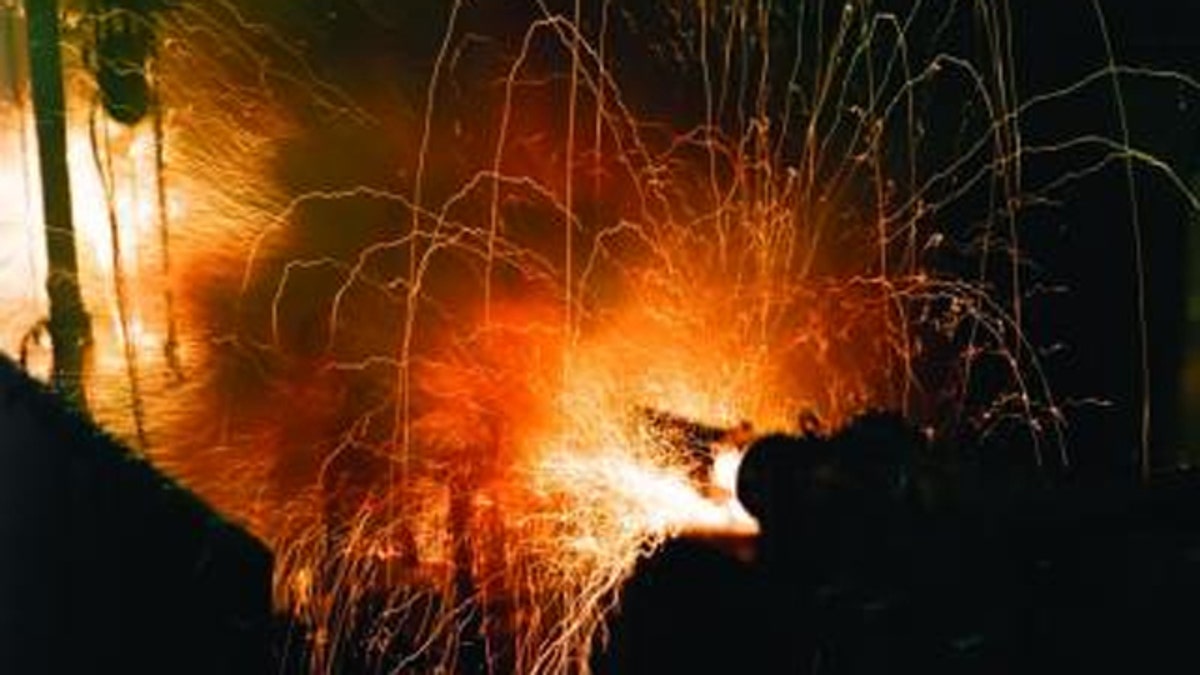
Without the need for dangerous explosives storage and handling, the Electromagnetic Railgun can potentially reach targets up to 20 times farther than conventional weapons. (U.S. Navy)
Navy scientists with the Office of Naval Research (ONR) hit a new milestone, successfully firing their electromagnetic railgun for the 1,000th time as the state-of-the-art weapon edges closer to real world deployment.
A theoretical dream for decades, the railgun is unlike any other weapon used in warfare. And though still in testing, it's quite real, as the U.S. Navy proved in a record-setting test Monday, Oct. 31, in Dahlgren, Va.
Rather than relying on a explosion to fire a projectile, it uses an electomagnetic current to accelerate a non-explosive bullet at several times the speed of sound. The conductive projectile zips along a set of electrically charged parallel rails and out of the barrel at speeds up to Mach 7.
The result: a weapon that can hit a target 100 miles or more away within minutes.
"This test demonstrates continued advances in armature development, rail design, and barrel materials used in high power railgun launch," said Dr. Robert Meger, head of the Naval Research Labs' Charged Particle Physics branch.
"Firing up to 15 shots per week on the laboratory's experimental railgun, researchers at NRL perform detailed testing and analysis of rails and armatures, providing S&T expertise to the Navy program that is directly applicable to tests at large-scale power levels," he said.
An electromagnetic railgun offers a velocity previously unattainable in a conventional weapon, speeds that are incredibly powerful on their own. In fact, since the projectile doesn't have any explosives itself, it relies upon that kinetic energy to do damage.
For the past few years, Navy researchers have been testing to increase rail strength and finalizing the armature composition as to achieve the highest velocity. In the four years since the first shot was fired at the U.S. Naval Research Laboratory Materials Testing Facility, researchers have enhanced the railgun’s energy by a factor of three -- from about 0.5 megajoules to currently 1.5 megajoules.
To get a better idea of the weapon’s power, “a one-ton vehicle moving at 100 mph has approximately one megajoule of kinetic energy, the U.S. Navy explained.
Despite the Halloween milestone, the future of the railgun remains in doubt. The Senate Armed Services Committee voted in April to eliminate funding for two of the Navy’s most futuristic (and by the same token least concrete) weapons: the free electron laser, essentially a super-powered death ray, and the railgun.
The Navy appears optimistic despite the tech's cloudy future.
"A railgun weapons system must be able to launch hundreds of projectiles and withstand extreme pressures, currents and temperatures," said NRL Commanding Officer, Capt. Paul Stewart. The firing of the thousandth shot "demonstrates Navy researchers are steadily progressing toward achieving that goal, developing a more effective and efficient future ship combat system," he said.
